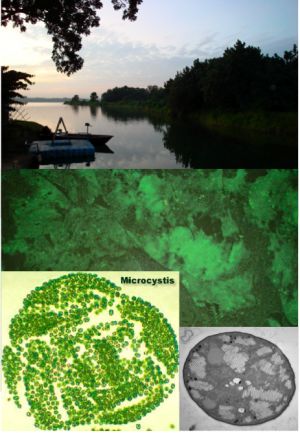
Molecular Ecology of Toxigenic Microcystis
Cyanobacterial toxins are a public health risk from recreational exposure to freshwater. Freshwater Reservoirs, such as the Kranji Reservoir in Singapore (pictured), harbor both Microcystin-producing cyanobacteria and those that lack the genes needed for toxin production. We are interested in the following questions: Under what conditions are cyanobacterial toxin biosynthesis genes activated? And, Under what conditions do toxin-producing cyanobacteria have a competitive advantage in the Kranji Reservoir? Understanding the molecular ecology of toxin production will improve prediction of high toxin/high risk algal blooms.
Molecular Mechanisms of Virulence in Aquaculture Pathogens
Reports of mass-mortality in natural and cultivated marine populations are increasing world-wide and many marine diseases have suspected microbial etiologies. With collaborators at the Prince of Songkla University in Thailand we are developing single and mixed-strain infection models of secretion and regulator mutants to investigate the mechanisms by which Vibrios closely related to V. harveyi and V. parahaemolyticus (>98% rRNA similarity) cause disease and mortality in marine invertebrates (e.g. the black tiger shrimp Penaeus monodon).
